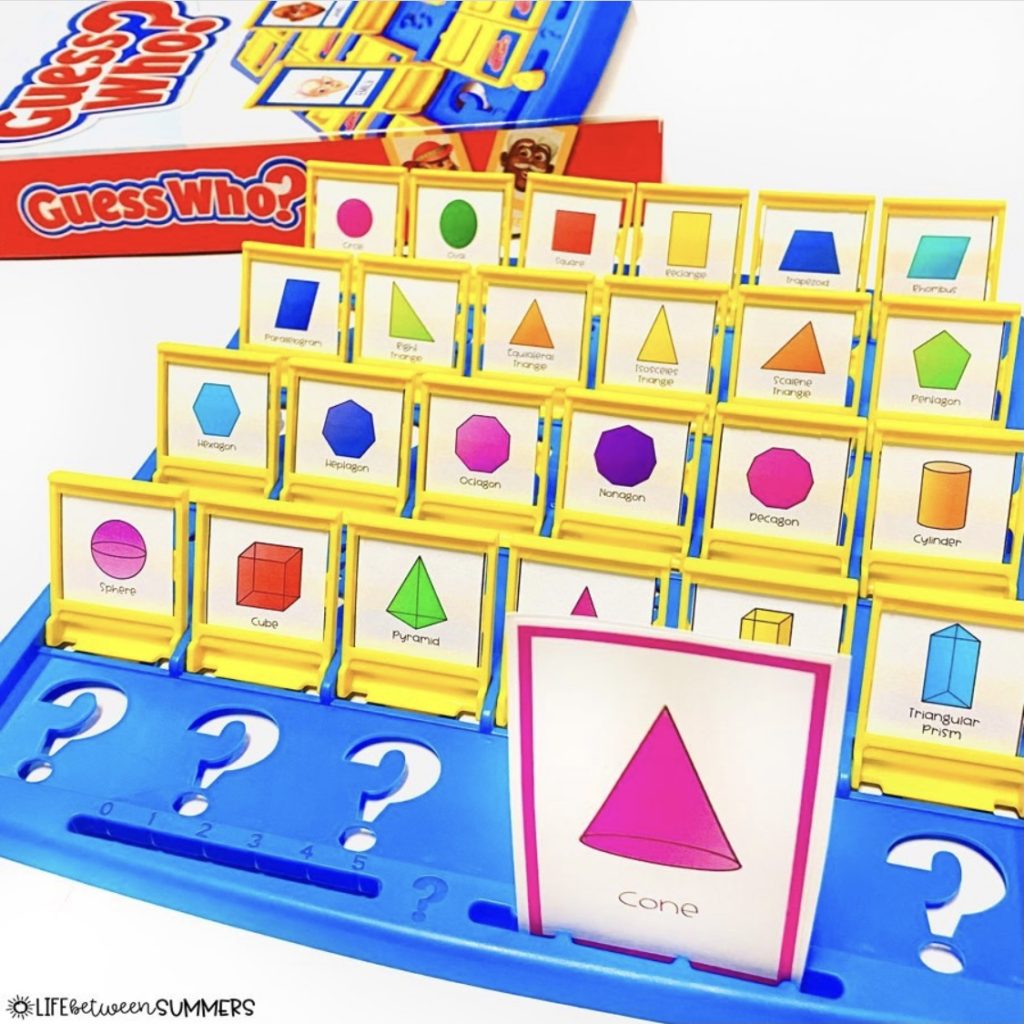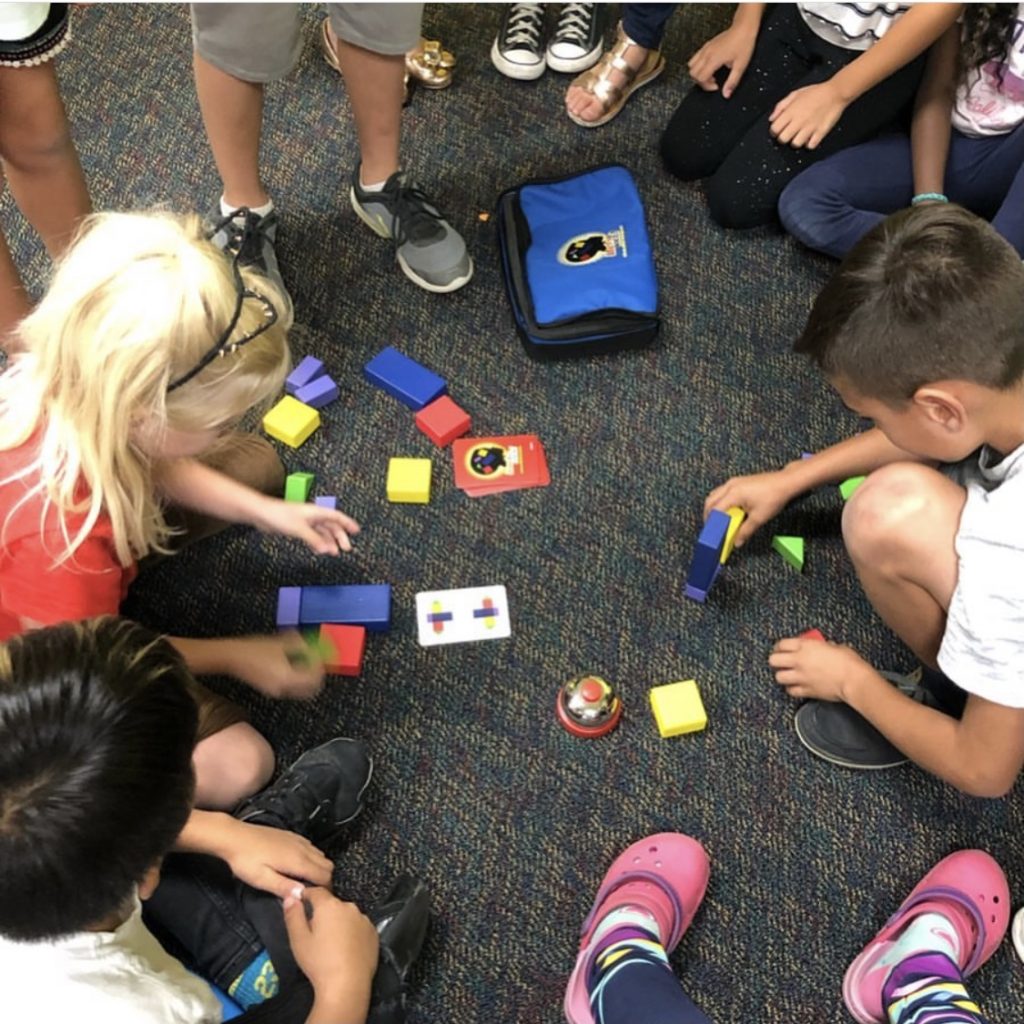If you think back to high school, chances are you either loved geometry or hated it. But personally, I’ve yet to come across an elementary student who hates it! With so much time spent on number sense throughout the school year, geometry activities provide a refreshing change of pace.
Geometry can also be a little deceiving, though. Kids see shapes and automatically think, “This is easy!” But as we know, there’s more to it than just identifying circles and squares, and students can often have misconceptions about certain geometry concepts.
It is therefore likely that you will want to supplement your adopted math curriculum with some additional geometry activities. And not just because students need the practice, but also because this math domain provides so much opportunity for engaging, hands-on learning! Here are just a few geometry ideas that are both skills-based and fun:
2D and 3D Shape Hunts
This real-life connection activity can be done in the classroom, or given as an assignment to do at home. Give your students a scavenger hunt sheet, and let them go to town with finding examples of 2D and 3D shapes in their own environment.

This activity can easily be recreated by having students fold and label their own papers, or if you’d like me to email you a FREE copy of the same organizers pictured above, click here and I’d be happy to send them your way!
What Shape Am I?
This is a guessing game that students really enjoy. You may have seen the children’s game Hedbanz before, where kids have to guess the word that is displayed above their heads by asking yes/no questions. This is a great one to have in a class board game collection, because not only can it be used for this particular math activity, but the regular game is also a popular choice during indoor recess on rainy days.

For geometry practice, you can use this same game concept, except swap out the cards that come with the game for cards with plane (2D) and solid (3D) shapes.
This is a versatile activity that can be done with partners, a small group, or the whole class. Even if you don’t have the head pieces from Hedbanz, it’s easy to make your own by using sentence strips. Just wrap one to fit around a child’s head, stapling the ends together. Cut a little slit in each strip for the card to fit through. Another option is to cut squares of Velcro tape to attach (and detach) the cards from the sentence strip head pieces.
As students try and guess what shape is on their head, you might also want to give them the “cheat sheet” in case they need help thinking of questions to ask. On the back of this sheet, you could also provide a list of shapes and their attributes that they can refer to for self checking.

As soon as they guess their shape correctly, have them record it, along with the attributes of that shape.

Then they can swap out their shape card for a new one, and off they go to try it again!
If you’re wanting to do this with your class using the same shape cards, cheat sheet, recording sheet, and the self-checking list of shapes and their attributes, all are included with the resource here in my shop. It’s also on Teachers Pay Teachers.
Mini Shape Books
Creating mini shape books is another effective way for students to practice identifying attributes of plane and solid shapes.
Prepping these books is super easy- just copy, cut paper in half, and staple. Students can color the front cover.

For the inside pages, students identify/label a variety of shapes and their attributes (you can pick and choose which ones to include, or use all of the shapes provided). They also brainstorm real-life examples and do their own drawing of each shape.

There is a visual of each shape on every page, but it is also helpful if you can show your students a “real” visual of the shape, such as a model from a tub of 3D shape blocks. Rather than telling the kids upfront what each shape is called, I ask if anyone already knows the name of it, since some of them might have that background knowledge. They can raise their hand to share, tell a partner, tell their table group, write it on their white board, etc.
For the “draw it” section, I do a directed drawing for each of the shapes- for many kids, this is their favorite part! Some of the drawings are very simple (like the plane shapes and the sphere) and some take more step-by-step guidance (like the pyramid and rectangular prism).
The kids also work together to determine the number of sides, vertices, faces, and edges for each shape, and list those in their mini books. As you might have noticed in the photo above, a color coding system is used for labeling these shape attributes. Students line the sides and edges in green, put points for the vertices in red, and color the faces yellow.
I also have them draw a happy “face” on each of the faces. It helps them remember what a face is, and plus, they think it’s funny. Again, geometry is fun, right?

We continue these steps for each of the shapes. Not only do students learn a lot simply through the process, but these mini books are a fantastic independent resource for them to go back and refer to throughout the geometry unit. I have them keep it inside their math folder, and they can take it out to use as a reference whenever they are doing a math page or other geometry-related assignment.
These mini books are also here in my shop and on TPT if you’d like to try them out!

Math Center Games
Once you’ve explicitly taught some foundational geometry skills, math center games are an engaging way for students to get continued practice. Here are two game staples that are surefire crowd-pleasers:
Geometry Jenga

You can click here to read more about Jenga for math centers. The geometry Jenga games are aligned to first grade and second grade Common Core standards. You can click below to find them right here on my website, and they’re also available on TPT.
Geometry Jenga for First Grade
Geometry Jenga for Second Grade
Guess What Shape?

This is another one based on a classic game, and it’s great for developing math vocabulary and reasoning skills. Go here for more details about Guess Who math games, and click here to find the geometry version here in my shop. It’s on TPT too!
Blocks Rock
Warning: this one gets a little loud and rowdy, but the kids can’t get enough of it. During indoor recess last year, my students even organized their own tournament-style matches, and everyone gathered around to watch like it was a boxing ring. I play this game with my own kids at home too, and they have a blast.


I shared a video of this game in action on my Instagram page, and you can also check out Blocks Rock on Instagram for more details. It’s definitely a good one to have on hand in your classroom game collection.
Hopefully you’ve found an idea or two here that you’d like to try with your class! These kinds of activities not only provide the skill practice kids need, but will also help them continue to see that geometry is fun (hopefully all the way up to high school…fingers crossed)!



Leave a Reply
You must be logged in to post a comment.